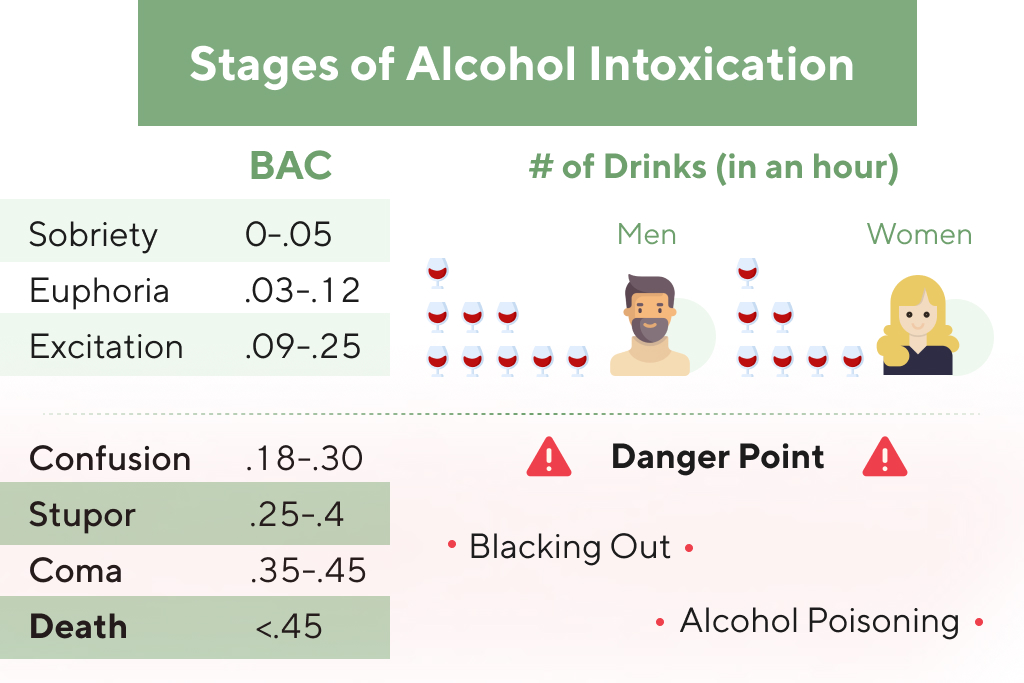They also address questions related to financing the group and managing public relations. Addictive behaviors have similar neurological and psychological processes and create rewarding feelings and sensations, so replacement addictive behaviors are common among those trying to overcome an addiction. Focusing on finding rewarding, healthy strategies that support your http://www.e-gost.org.ua/gost/22820-gost-r-51653-2000.html long-term recovery. Aerobic exercises like running and swimming are fantastic for anyone on the road to recovery. These activities not only improve your cardiovascular health but also play a critical role in mental wellness. As you engage in these exercises, your body releases endorphins, those feel-good hormones that naturally elevate your mood and reduce stress.

Step Programs

There are many different paths to substance use recovery, and 12-step programs are just one resource that people may find helpful. Research suggests that 12-step interventions and mutual support groups can be essential in recovery. There is no one-size-fits-all http://cxema.ru/forum/topic_308/ approach when it comes to addiction recovery. Lifestyle changes, behavioral therapy, medications, and mutual support groups may all play a role in your treatment, but it is important to find the approach that works best for your needs.
Table of Contents

Every person needs a comprehensive recovery plan that addresses educational needs, job skills, social relationships, and mental and physical health. Therapy may be critical to resolving underlying problems that made escape into substance use so appealing in the first place. Many people believe that they are powerless to change their own addictive behavior, and often it is a belief that keeps people addicted.
- Working with a therapist can help you gain new insights into your life, enhance your self-confidence, and learn to make healthier choices.
- However, it’s important to do this in a healthy way with the guidance of a therapist or sponsor.
- While relapse is frustrating and discouraging, it can be an opportunity to learn from your mistakes, identify additional triggers, and correct your treatment course.
Step 5: Admit Your Mistakes to Your Higher Power, Yourself, and Someone Else
These models recognize the cyclical nature of change, emphasizing the potential for relapses and reinforcing the importance of ongoing support. As individuals traverse the stages – pre-contemplation, contemplation, preparation, action, maintenance, and termination – the integration of motivational interviewing ensures a tailored and responsive approach. Ultimately, embracing the nuances of each individual’s journey, TTM and MI provide a comprehensive framework for clinicians and individuals alike to navigate the intricate terrain of addiction recovery. Individuals grappling with substance use disorder (SUD) and addiction often face complex challenges, necessitating a multifaceted approach for resolution. The journey to recovery is highly individualized, with diverse paths tailored to unique circumstances. One influential framework guiding this process is the “Transtheoretical Model of Change” (TTM), developed by Dr. James Prochaska and Dr. Carlo DiClemente.
- Practitioners gauge a client’s stage to understand their readiness for change.
- It may include clinical treatment, medications, faith-based approaches, peer support, family support, self-care, and other approaches.
- Whether it’s a quick jog, a yoga session, or just a walk in the park, regular exercise offers a reliable way to clear your mind and lower stress levels.
- Through these principles, individuals in recovery can develop the tools and mindset necessary to maintain sobriety, improve their relationships, and lead more fulfilling lives.
• Meaning and purpose—finding and developing a new sense of purpose, which can come from many sources. It may include rediscovering a work or social role, finding new recreational interests, http://apachan.ru/colchek/?id=15850 or developing a new sense of spiritual connection. The important feature is that the interest avert boredom and provide rewards that outweigh the desire to return to substance use.
Drawing on peer support
Once you’re sober, the negative feelings that you dampened with drugs will resurface. For treatment to be successful, you’ll first need to resolve your underlying issues. Sober living homes provide a safe, supportive place to live while you’re recovering from drug addiction. They are a good option if you don’t have a stable home or a drug-free living environment.
Everyone deserves addiction treatment that works — including those in jail
Sponsors are not medical professionals, but many of them are in recovery. They share their knowledge and advice with people who are still learning how to navigate the challenges of maintaining recovery after quitting alcohol or other drugs. Twelve-step groups often reference a higher power, but these programs are not just for religious people. In fact, two large multisite studies found that nonreligious participants who commit to 12-step programs seem to benefit from these groups as much as religious individuals do. For decades, countless individuals have used 12-step meetings to recover from substance use problems. In many instances, participants overcome their problems and become healthy, productive community members.
- One third experienced relapses when they were experiencing negative emotions and urges to drink/use.
- Twelve-step programs are support groups for people battling a variety of destructive behaviors, including substance use disorders.
- Addiction involves brain mechanisms, particularly in the dopamine system crucial to reward processing.
- But cravings don’t last forever, and they tend to lessen in intensity over time.
- Many groups, like Narcotics Anonymous, use the steps exactly as they were conceived by AA.
By acknowledging differences, offering alternatives, and emphasizing flexibility, the recovery process becomes more accessible, person-centered, and ultimately more effective in promoting lasting positive change. Addiction recovery is a complex and nuanced process, and recognizing the diversity of individual experiences is crucial in developing effective strategies for sobriety. The concept of harm reduction, along with various modalities, offers a flexible and personalized approach to cater to the unique needs and circumstances of each individual on their journey to recovery. Becoming sober can be a scary thought for someone who has relied on substances for so long, and staying sober is a process that requires guidance, support, and fortitude. That’s why the founders of Alcoholics Anonymous (AA) created this iconic 12-step program. Together, The Twelve Steps of AA serve as a guide for navigating recovery as well as helping others walk a similar path.

In addition, self-care is a vital foundation for a healthy new identity. At the very least, self-care should include sleep hygiene, good nutrition, and physical activity. Sleep is essential for shoring up impulse control and fostering good decision-making. Another vital element of care during recovery is relapse prevention—learning specific strategies for dealing with cravings, stress, setbacks, difficult situations, and other predictable challenges.
